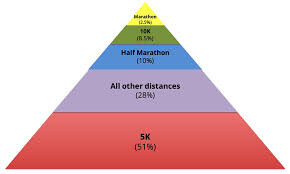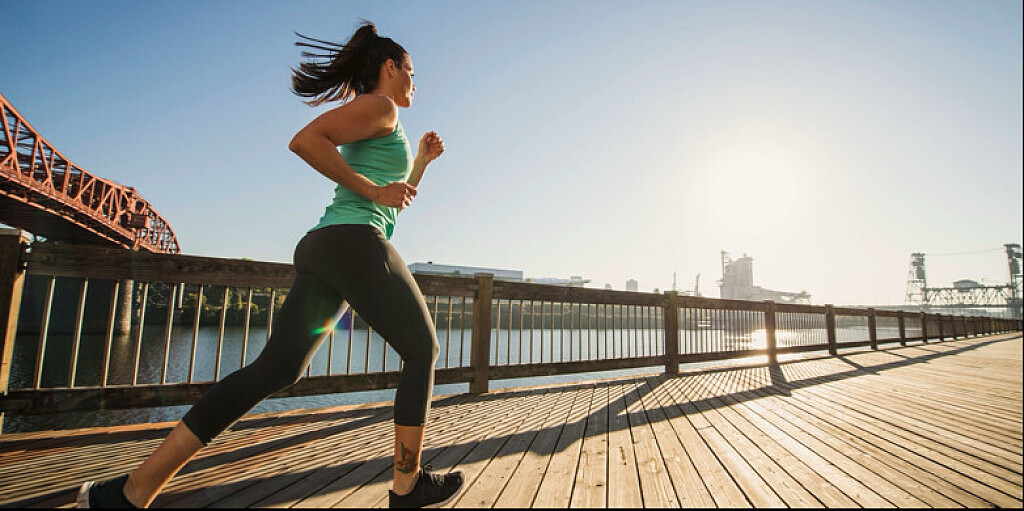Running News Daily
Running News Daily is edited by Bob Anderson. Send your news items to bob@mybestruns.com Advertising opportunities available. Train the Kenyan Way at KATA Kenya and Portugal owned and operated by Bob Anderson. Be sure to catch our movie A Long Run the movie KATA Running Camps and KATA Potato Farms - 31 now open in Kenya! https://kata.ke/
Index to Daily Posts · Sign Up For Updates · Run The World Feed
How to Find Your “Sweet Spot” Race Distance
Expert advice for focusing on your best event to maximize your running potential.Ever notice that some runs and races are more satisfying than others? These workouts aren’t necessarily the easiest runs or even the ones that are the most fun. Instead, they’re fulfilling because the distance feels challenging, but doable. You collect your medal and walk away thinking, “I bet I can do even better next time,” rather than, “thank goodness that’s over.”
If you have already clicked with a specific distance, you may have already found your running “sweet spot,” or the race length that fires up your inner athlete and gets you training for your next PR. But if you’re new to running or haven’t yet hit your racing stride, some experimentation and a little self-reflection will help you determine where to focus your time and effort when registering and training for events. To help you land on your sweet spot (and figure out what to do when you get there), we chatted with a few run coaches who have worked with athletes of all levels of experience and race preferences. Here’s what you need to know.

What factors determine your sweet spot race distance?
Before you declare yourself a 10K devotee or commit to running a marathon in every state, give yourself adequate time to build a personal relationship with running and experience different races.
“I don’t know if there’s really a set amount of time required to figure this out,” Matt Forsman, USATF/RRCA-certified running coach and race organizer at Sasquatch Racing, tells Runner’s World. “Some people run for years before determining what distance is their sweet spot. For others, a certain distance immediately speaks to them. If you’re new to running, I’d say give yourself at least six to nine months to build some running fitness, try a few distances, and go from there.”
As you rack up the miles and try different races on for size, it can be helpful to keep these factors in mind:
Fitness and Experience
“Your current level of running fitness should be an important part of the calculus in determining what race distance is best for you,” Forsman says, noting that shorter distances like 5K and 10K, while they present their own unique challenges, are generally more beginner-friendly than half marathons and marathons.
You may find that, even as a newbie, these shorter distances enable you to make noticeable progress that’s reflected in your race times. These wins are valuable, as they can keep you engaged and motivated.
Schedule and Lifestyle
Anyone who’s trained for a marathon or ultramarathon will tell you how all-consuming it can be. Some people have the necessary bandwidth or a flexible schedule. Others have the support and resources to fit training between competing priorities, like work, family obligations, and social events. But if you simply don’t have the time and energy to train for a specific distance, it’s probably not your sweet spot.“You should fit running in and around your life and not life in and around your running,” Todd Buckingham, Ph.D. exercise physiologist at PTSportsPRO in Grand Rapids, Michigan tells Runner’s World. “We do this because it’s fun. We do this because we want to push ourselves. But hopefully not to the extent of alienating friends and family. You need to find a distance that will work with your life.”
Location
If you train outdoors, you will always contend with temperature, climate, and terrain. Therefore, where you live will likely play a role in determining your sweet spot, Will Baldwin, USATF and VDOT-certified running coach in Flagstaff, Arizona tells Runner’s World
“If summer temperatures soar, focusing on local 5Ks instead of marathon training will be much more manageable,” Baldwin says. Of course, you can beat the heat by logging miles before or after sunrise, running on a treadmill, but workarounds often require extra planning and schedule adjustments. The same goes for training in frigid, icy temps.
In some cases, your zip code may present an advantage, as year-long temperate weather and extended daylight hours open up more opportunities for longer outdoor training runs.
“And if there’s a fantastic trail system nearby with plenty of races, it’s the perfect chance to test those trail-running skills and have some fun with it,” Baldwin adds.
Past Performance
Your race history is a clue to where your natural talents lie, which can help inform your sweet spot. “Genetics do play a role,” Buckingham says. “Some people have the diesel engine where they can just go all day long, but they can’t go any faster…other people are really good at short distances but struggle at long distances.” Buckingham and Baldwin recommend checking out online tools like the VDOT Running Calculator, which uses one race distance time to determine your estimated time for other distances. Runner’s World also has an easy-to-use race time predictor. Say, for example, your half-marathon PR is 2:10. The calculator uses this information to suggest an exhaustive list of predicted race times, including a 58:40 10K. However, if your 10K PR is actually 56:10, you may be better suited to the 10K.
“Athletes can use this tool to see which of their PRs is the most distinguished for each distance, helping them determine their ideal race distance,” Baldwin says.
You can also garner a lot of information by participating in local races and looking at race results. “See where you finish in relation to other people your age and sex because that will probably tell you just as well,” Buckingham says.
Injuries
“I think it's important to consider any aggravations and injuries you’ve incurred,” Forsman says. “Running is a high-impact sport that generates about three to seven times your bodyweight in impact force per foot strike. If you have [had] a number of injuries in your recent or distant past, shorter distances like the 5K or 10K may make the most sense. Conversely, if you’ve never had any running-related injuries and your running fitness level is high, a longer distance might work great for you.”
Your Happiness and Enjoyment
Do you notice that some races are simply more fun than others? Pay attention to those gut-level feelings, even if they contradict all of the other data you’ve collected, Baldwin says.
“When figuring out an athlete’s ideal race distance or their sweet spot, I love to start with what excites them the most,” he says. “Even if someone shines in a 10K or half marathon, their heart might be set on the full marathon. Passion is often the fuel source of consistent training, so tapping into that excitement is really important.”How do you level up in your sweet spot race distance?
Once you find your sweet spot, you may need to make some adjustments to your running routine because a training program should be tailored to your upcoming event, if you plan to race.
“If you’re currently running a few easy miles a few times a week but really want to run a fast 5K, you’re going to need to inject some ‘quality,’ like tempo, intervals, and hills, to develop strength and speed,” Forsman says. “If you want to simply tackle a longer distance like a half or full marathon, you’re going to need to gradually add some more miles into your training to build stamina and endurance.”
Focusing on one distance also allows you to fine-tune your fueling and hydration strategy, especially if you opt for longer distances. “If the event we’re training for is going to take us over 90 minutes to complete, we have to start talking about and practicing fueling. We’ll need to incorporate either some liquid fuel or energy gels to help us finish the race and utilize all of our fitness,” Baldwin says. “It’s an added expense to have fuel for all of the important long runs and races, so it’s also something to consider when choosing your ideal race distance,” he adds.
Are there downsides to sticking with one race distance?
It can be rewarding to climb the ranks in sweet spot events, but the experts caution against getting too “stuck” in your sweet spot.
“You should definitely be mixing up the types of races you do,” Baldwin says. “It’s common for a marathon runner to come to me who has been stuck at a certain level for years. When I go back through their training history, they almost always have been doing only marathons for several years in a row. They’ve neglected the shorter races, speed work, and their leg turnover.” Baldwin explains that training at different paces engages different energy systems, and temporarily focusing on shorter, faster distances can improve your speed and efficiency, even on slower endurance runs.
The same concept applies to runners with a shorter sweet spot. “If shorter distances like the 5K or 10K are your thing, there’s still utility in tackling longer distances. Training for a longer distance can help you better manage fatigue in the latter stages of your 5K or 10K,” Forsman says.
Plus, you could miss out on what got you hooked on running in the first place. “Professional athletes have to specialize and really just focus on one event because that’s how they earn their livelihood. But the average runner should have fun with it,” Buckingham says. “If you have fun doing one race distance, that’s fine. But don’t be afraid to jump in the local 5K if your friends ask you to join them.”
by Runner’s World
Login to leave a comment




